Stunning Stops for Your South of France Road Trip
Touring the south of France not only conjures up images of the sites and smells of lush lavender fields, oceans of vineyards and wine, hilltop towns looking like they stepped out of history, the colours and glow of Provence and the lush luxurious French Riviera.
The South of France is a destination that has captured the imagination of travellers for generations. From the glamour of Cannes to the quaint fishing villages along the coast, this region offers a wealth of experiences and sights to explore. And what better way to experience a Southern France road trip than by doing it yourself.

With winding roads through picturesque countryside, stunning views of the Mediterranean Sea, and charming towns to discover along the way, a South of France road trip is sure to be an unforgettable adventure. In this article, we’ll share some tips and highlights for planning your own journey through one of Europe’s most beautiful regions.
France is a fantastic place for a road trip and Southern France is just one of many. Why not do the Route Napoleon or the Alsace Wine Route, Route du Mont-Saint-Michel, and of course the D-Day Landing Beaches route?
These 19 extraordinary sites in the south of France include some well-known ones and some truly off-the-beaten-path areas that you may never have discovered on your own.
The south of France is a mecca for fascinating sites, ancient fortresses and castles (chateaux as they are known here in France) and a history that has imprinted itself on the world. Many of us have read a great novel or non-fiction book about many of these areas in France and they have gone on our bucket lists when creating a southern France itinerary.
Here are 19 fascinating places to visit in the south of France written by the folks who either live there or have visited and fallen in love with the region
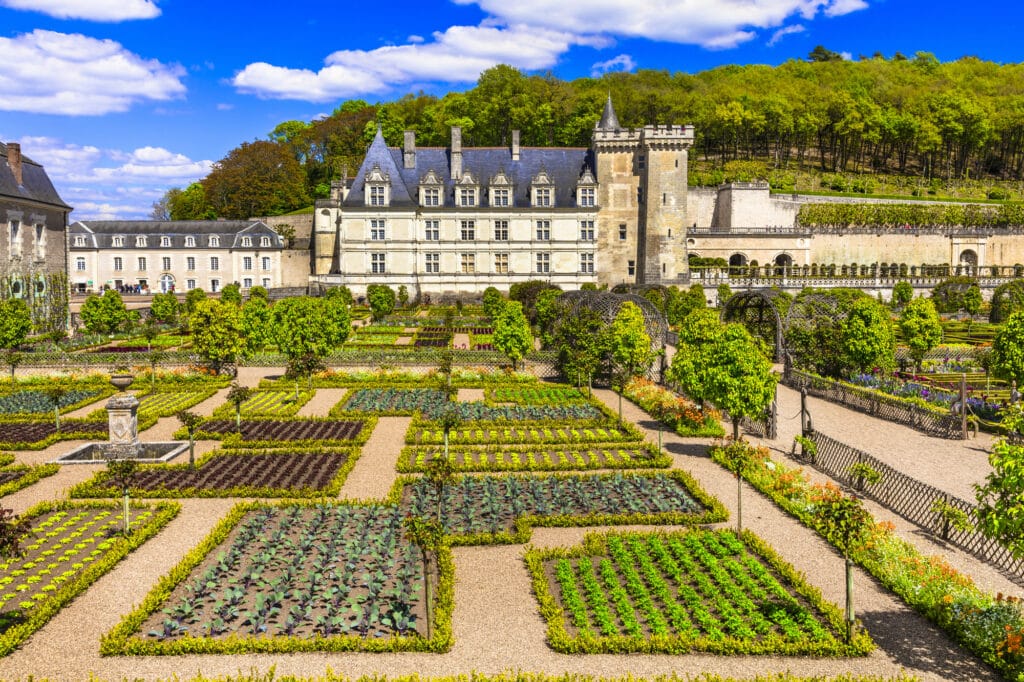
What is the south of France?
Southern France or le Midi is a region of France that borders Spain and Italy and the Atlantic Ocean. It is made up of two French regions, PACA or Provence-Alpes-Côte d’Azur to the east of the Rhone, and Languedoc Roussillon to the west of the Rhone. The main cities are Montpellier, Marseilles, Toulon, Cannes, Nice and Perpignan. This is a far bigger area than most tourists realize.
The French Riviera or la Côte d’Azur is a very small part of the south of France from around Cassis which lies east of Marseille to the Italian border. Here you will find the famous French Riviera and famous resorts such as St. Tropez, Nice and Cannes.
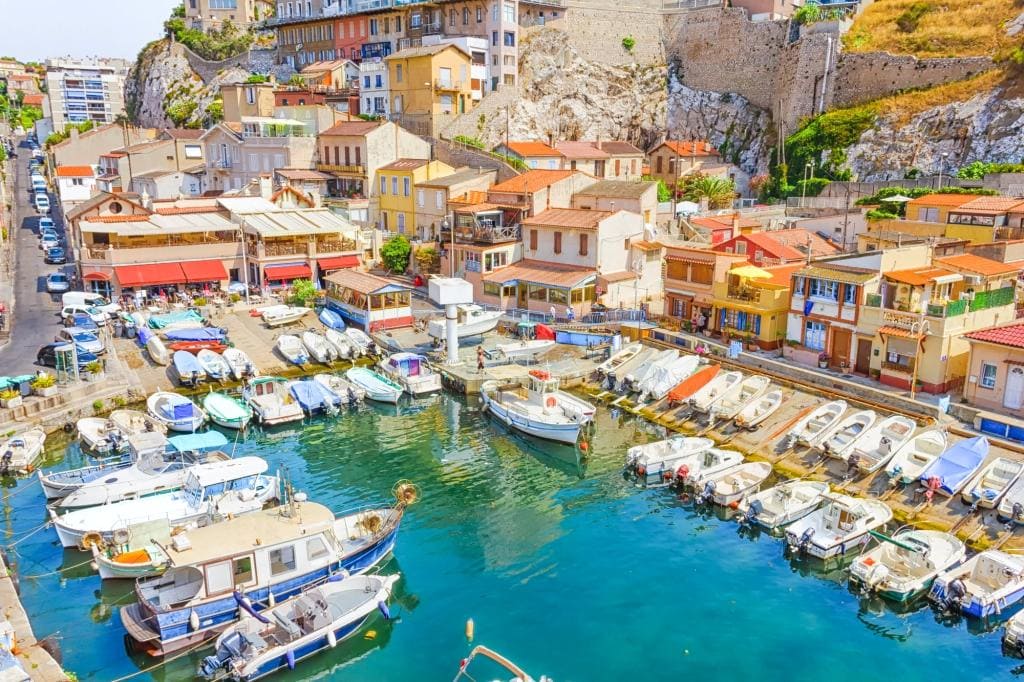
Moving further inland to the mountainous Hautes Alpes is where you will find those fairytale French Beautiful villages perched on hillsides with massive stone fortresses defending them.
This region is home to France’s famous historic ski resorts such as Chamonix and Megève, as well as its major skiing areas such as the Trois Vallées (Courchevel, Méribel, Les Ménuires) and Paradiski (Les Arcs, La Plagne, Peisey-Vallandry).

Inland you will find the famous area of Provence with its lavender fields, deep river gorges, dark woods and valleys. The historic area of Provence includes Avignon and the famous bridges, Aix en Provence and Arles with its Roman ruins.
The Languedoc region includes the eastern end of the Pyrenees which is a natural border between Spain and France. This area is known for its flowers and fruit and is where you will find the gorgeous city of Carcassone and its Cathar Castles. The most historic city is Nimes with its superb Roman remains.
The south of France also includes Occitanie which is located in the centre, Nouvelle-Aquitaine to the west and mustn’t forget the Island of Corsica.
- Stunning Stops for Your South of France Road Trip
- What is the south of France?
- Travelling to the south of France
- When to visit the South of France
- South of France travel
- The best places to visit in southern France
- Cannes Lerins Islands
- Cathar Castle Ruins, Lastours
- Avignon
- Moustiers-Sainte-Marie
- Villa Kerylos, Beaulieu-sur-Mer
- Saint Emilion – Bordeaux
- Verdon Gorge
- Villa Ephrussi de Rothschild
- The Calanques of Marseille
- Citadel Of Carcassonne, Carcassonne (Cité de Carcassonne)
- Menton
- Nice
- Gordes
- Pont du Gard Aqueduct
- Arenes de Nimes
- Antibes
- Villefranche-de-Conflent
- Arles
- St.Jean-Pied-de-Port
- St. Paul de Vence
Xyuandbeyond is reader-supported. When you buy through links on our site, we may earn an affiliate commission. You can read my privacy policy here.
Travelling to the south of France
Travelling in the south of France is not difficult but you need to remember that France itself is nearly the size of Texas so you can imagine the travelling distances. For example, Paris to Marseille is around an 8-hour drive.
You could fly into Nice (LFMN), Cannes (LFMD), Marseille (LFML), and Toulon (LFTH) are the most popular airports in Southern France.
The two main airports in Provence are Avignon and Nimes and then down on the coast, you will find the main international hub of Marseille.
When you make your south of France itinerary you can decide which airport to fly to even if you come into Paris and fly from CDG (Charles de Gaulle) and then rent a car when you arrive.
Renting a car in the south of France makes sense because local transportation is rather limited and if you really want to see some special places you won’t find tours to them and renting a car and driving where you want is your only option. Don’t forget here in France we drive on the right so if you are from Canada or the US you will have no trouble driving at all.

When to visit the South of France
Ideally, thanks to vacation times and depending on what you want to see the best time to visit the south of France would be in the summer. This can get very warm and very crowded. August is the month that the French go on vacation themselves so when you add in the thousands of tourists it can be pretty overwhelming.
Personally, I prefer Spring and Fall as I just can’t deal with masses of tourists and the overcrowding it brings, not to mention the price increases during the high season.

South of France travel
The following is a compilation of sites and places you may want to visit. Inspired by history and literature some of these you may never have heard of and they are off the beaten path in the south of France. Others are world-famous. All of these locations have been personally visited by the writers and come highly recommended.
This area’s history goes back over 2000 years when it was part of the Roman Empire so be on the lookout for lots of ancient Roman Ruins. The area is also home to 11 UNESCO World Heritage sites out of the 45 sites in France.
It is simply not possible to take in this whole region in a few weeks and you will find yourself coming back time and again so you can discover southern France. If you are anything like me you will find more and more locations to research after reading your favourite historical fiction and non-fiction books.
The best places to visit in southern France
Cannes Lerins Islands
Growing up around Cannes, I never made up the time to visit the Lerins Islands. Too busy travelling to other places where the grass is greener. As I was visiting my parents one day, I felt it was time to finally explore some of the top Cannes attractions and decided to learn more about the Lerins Islands.
The Iles de Lérins, as we call them in French, is composed of four islands off Cannes in the South of France. The small Saint-Ferréol and Îlot de la Tradelière islands are inhabited, contrary to the bigger islands of Saint-Honorat and Sainte-Marguerite.

Saint Honorat Island is known for its Abbaye de Lérins (Abbaye Notre Dame de Lérins), inhabited by Cistercian monks since the 5th century and currently home to about twenty months. The monks live off their lavender and beehive productions and their popular vineyard product, the Liqueur Lérina Jaune. We definitely enjoyed tasting and even brought a bottle home!
Part of the charms of Saint Honorat Island is the 11th-century ruins of the Tour Monastère. Walking through the grounds and gardens was undoubtedly enjoyable, appreciating the shade of the trees on the hot summer day.
Some of the oldest infrastructures of Sainte-Marguerite Island date back to the early 17th century, forming what was named Fort Royal, a defensive outpost during the fight against the Spanish.
The fortress included a prison where the Man of the Iron Mask was supposedly imprisoned under Louis XIV. The mystery of the prisoner became famous under Alexander Dumas’ D’Artagnan story in mid 18th century. As a must-read classical book in French literature, stepping between these old walls was like stepping back in time, trying to picture the challenges of living in such small and rustic quarters.
A long-time overdue visit, but I was so glad we decided to head to the Lerins Islands. A worthy visit and a great way to learn about the history along the Mediterranean Coast. Contributed by Patricia Patricia Pagenel of Ze Wandering Frogs.
Cathar Castle Ruins, Lastours
Cathars believed in Jesus as being this spiritual, benevolent god, and they adhered to the New Testament as their guide to living correctly. They rejected the humanity of Jesus, which put them in conflict with the ideas of the Catholic church.
The Cathars rejected the teachings of the Catholic Church as immoral and claimed most of the books of the Bible were inspired by Satan. They criticized the Church heavily for the hypocrisy, greed, and lechery of its clergy, and the Church’s acquisition of land and wealth. The Cathars were condemned as heretical by the Pope and massacred in the Albigensian Crusade (1209-1229 CE) which caused massive destruction to Southern France’s culture.
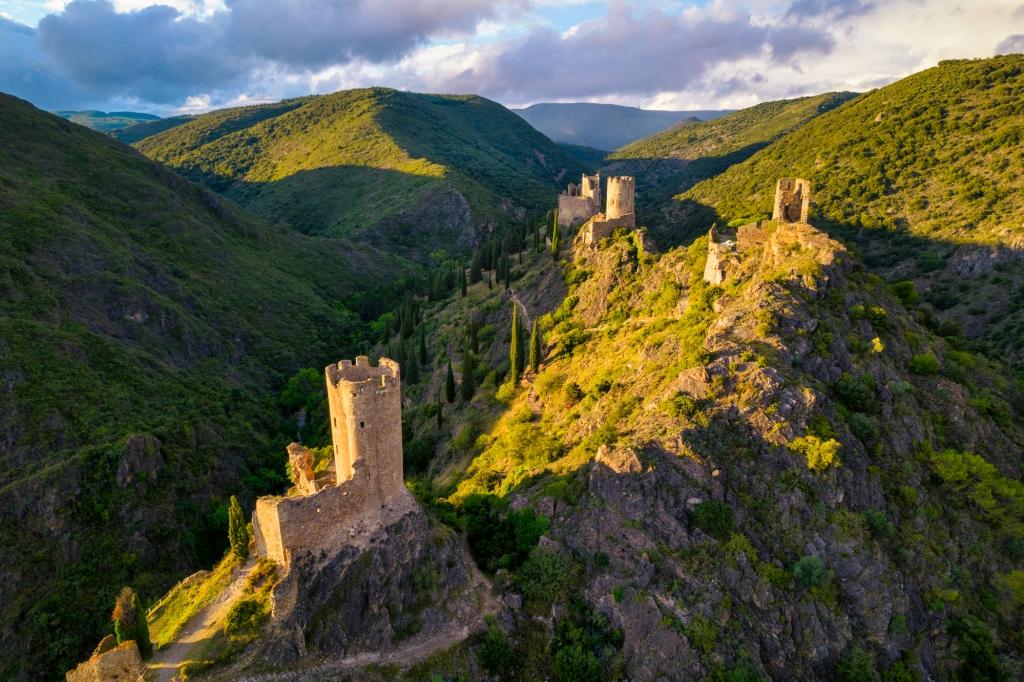
Las Tours or the Towers belonged to the Lords of Cabaret who built the Castles in the 13th century. The three towers were built on top of a rocky outcrop and each had a name. Cabaret on the north, Quertinheux and Surdespine to the south.
During the Cathar Crusade by the Catholic Church, this was the centre of resistance to the French crusaders led by Simon de Montfort.
Lastours is also the name of a nearby modern village and commune in the Aude department in southern France. Lastours lies 18km north of Carcassonne in the valley of the River Orbeil.
The Chateaux de Lastours are 4 Cathar Castles located in Lastours, a little town in the South of France. It is a great ruined castle called Cabaret, Tour Regine, Surdespine and Querthineux. Three of them were built before the 11th Century, and the last one (Tour Regine) was built after the 13th Century to give ultimate control to all the surroundings.
If you want to see all the castles, it’s about a 25-minute hike to the first one where you can view all from the entrance.
Avignon
Avignon is one of the most historically important cities in the south of France, and should definitely be on your travel destination bucket list. It’s easy to reach Avignon via France’s high-speed train network.
Maybe it’s because I read too much historical fiction, but I always love visiting a walled city. There is just something so intriguing about them, and they retain so much character and charm.
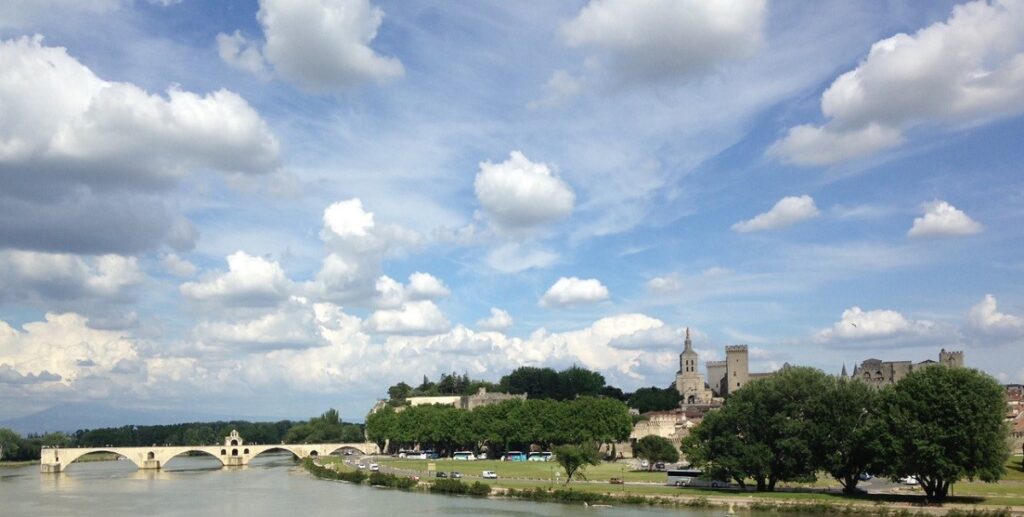
There are many excellent things to do in Avignon, and many of these are found in Avignon’s original city centre. Avignon has of course now expanded well beyond its city walls. Be sure to take some time to walk along the Remparts D’Avignon. You’ll get some great views from atop the city walls!
One of the most historically significant things about Avignon is that it was the seat of the papacy for a large part of the 14th century. You’ll want to visit the Palais des Papes, which served as the papal residence and is designated as a UNESCO World Heritage Site.
Another of Avignon’s favourite attractions is the Pont Saint-Bénézet, also known as the Pont D’Avignon. This bridge dates back to the 12th century, although only a portion of the bridge remains today, along with a tiny chapel dedicated to Saint Nicholas. This bridge is famous as the subject of the French nursery rhyme ‘Sur le Pont D’Avignon’.
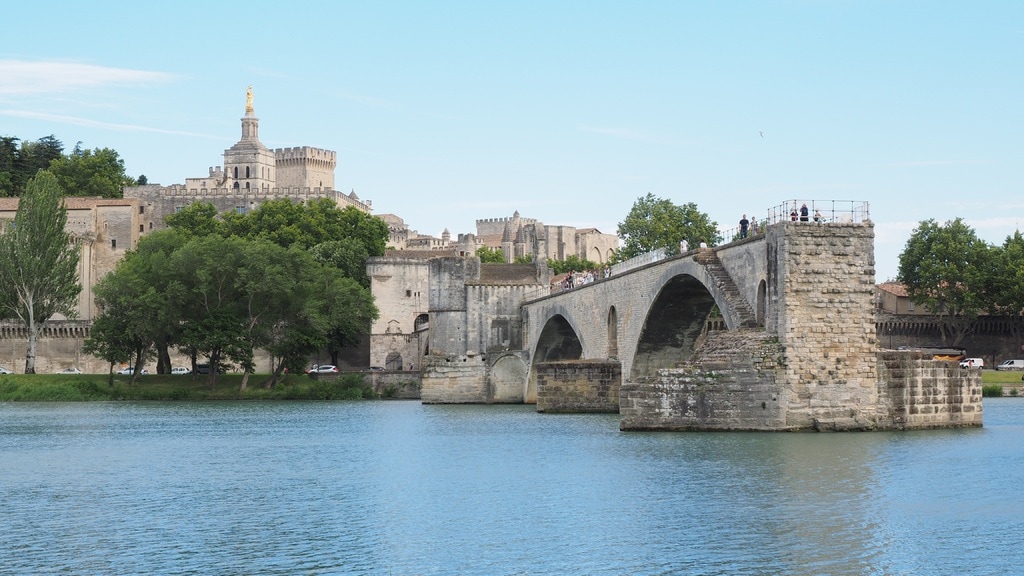
If you’re a fan of local markets, you’ll definitely want to stop by Les Halles D’Avignon to pick up fresh bread and produce and to sample the local cuisine. Check out the north façade of the market, which is covered with over 300 square meters of plants forming a living piece of botanical art! Contributed by Lisa Garrett of Waves and Cobblestones
Moustiers-Sainte-Marie
Nestled between two limestone cliffs in a picturesque setting of southern France is the historic town of Moustiers-Sainte-Marie. Due to its well-preserved architecture and stunning location, this little medieval village has been recognised as one of the most beautiful small towns in France.
After several visits to this charming town over the years, it has quickly become my favourite place to visit in the south of France. With plenty of great things to see and do in this region, it’s easy to spend a few days in Moustiers-Sainte-Marie exploring the town and its surroundings.
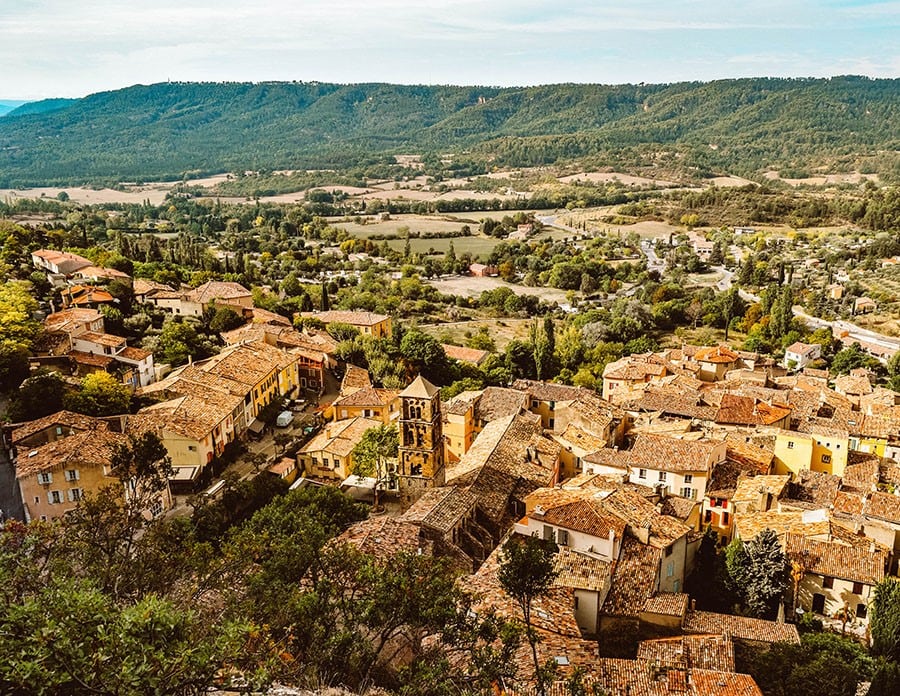
Moustiers-Sainte-Marie dates back to the 5th century when monks first founded a monastery. The town retains much of its medieval charm and features fortifications, churches and other buildings that date back to the 12th century. One of the most popular things to do in Moustiers-Sainte-Marie is taking a walk up to the 12th-century chapel along the narrow cobblestone streets that’s built into the cliffs high above the town. The church is quite small but the views over the town and countryside are breathtaking.
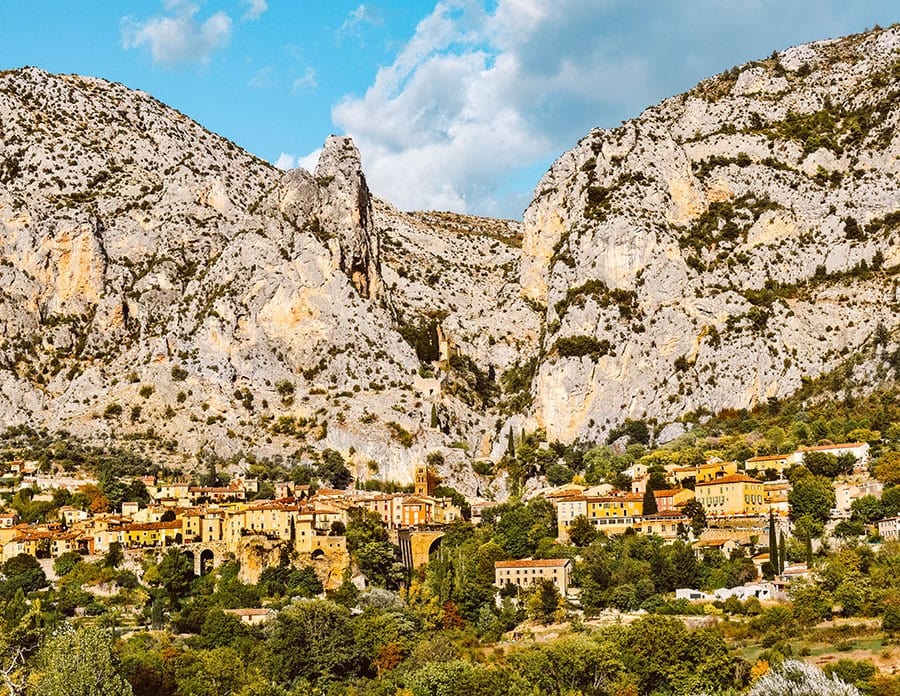
Aside from its fascinating history, Moustiers-Sainte-Marie is also known for its natural beauty. No visit to this region is complete without exploring the Gorges du Verdon or the beautiful Lac de Sainte-Croix, located a 10-minute drive from the town. During the summer months of June – August, you can visit the Valensole lavender fields of Provence which are only a short drive away from Moustiers-Sainte-Marie.
Moustiers-Sainte-Marie can be easily included on a road trip through the south of France or as a day trip from the cities of Nice or Aix-en-Provence. Most organised day tours will also include a drive through the Gorges du Verdon. Contributed by Ann of The Road Is Life.
Villa Kerylos, Beaulieu-sur-Mer
Beaulieu-sur-Mer lies between Nice and Monaco on the Cote d’Azur, a beautiful stretch of the rocky Mediterranean coastline filled with open countryside, golden beaches and pretty villages. Beaulieu is home to many of the international elite who have large homes here to make the most of the sunshine, beauty, and huge marina for their yachts.
One of the most impressive buildings is Villa Kerylos, located right on the headland and surrounded on three sides by the clear turquoise sea. It was built at the turn of the 20th century for the archaeologist, Theodore Reinach, who so admired the ancient world that he had his home designed as a luxurious Greek villa arranged around an open courtyard with Roman, Egyptian and Pompeiian influences.

Furnishings were exact replicas of those found in museums, with any modern conveniences incorporated into the designs, and the result is a stunning building in a wonderful setting. Fortunately, it is open to the public, so this fascinating place is accessible to all, not just the wealthy few.
The focal point is definitely the peristyle or open courtyard, created with white marble, Doric columns and terracotta pots filled with plants and trees. The sound of splashing water comes from a small fountain in the centre and it was an idyllic place to spend some time, one I found hard to leave.

The whole house is filled with statues, Grecian urns and vases, mosaics, elaborate wooden furniture, and some vivid wall paintings. All modern elements were carefully hidden from sight, even mirrors and showers, and personal objects such as cosmetic items and cutlery are made in an ancient style, making Villa Kerylos as accurate a representation of a historic villa as you are ever likely to visit.
Audio guides are available in several languages and they are well worth using, as they give detailed information about the villa, its history and its contents. It is the perfect home for an archaeologist and is in fact one of several archaeologists’ homes open to the public which you can visit across the world.
The garden is only small, although filled with colourful flowers, it is the views which are the most impressive of the external features, particularly across the crystal clear waters of the bay and the small marina to the sandy beaches and cream buildings of Beaulieu-sur-Mer, a truly delightful part of the south of France. Contributed by Sarah of Slow Travel UK.
Saint Emilion – Bordeaux
Saint Emilion is a small town located close to the city of Bordeaux which is known for its world-class wines. Bordeaux is a hotspot for wine lovers and it’s no secret that the best ones actually come from the village of Saint Emilion.
You can easily get there by train or join a group tour which will show you some of the best hotspots in and around Saint Emilion. You’ll find hundreds of historic wine chateaux here, some of which allow you to visit their ancient caves where the wine is stored.

Enjoy a tasting and find your new favourite wine to take home. Just be aware that prices will be high here and finding great wine on a budget can be a challenge. If you want to learn more about the history of Saint Emilion and winemaking make sure to join the tourist train tour which takes visitors around the vineyards and has an integrated audio tour teaching you interesting facts about the area. There is even a glass of wine included and a stop at a beautiful winery.
Once you’ve returned to the centre of the town make sure to wander around, visiting historic landmarks such as the Monolithic Church or the old Cloister. There is also a Tour du Roy and countless smaller houses that date back hundreds of years in history.
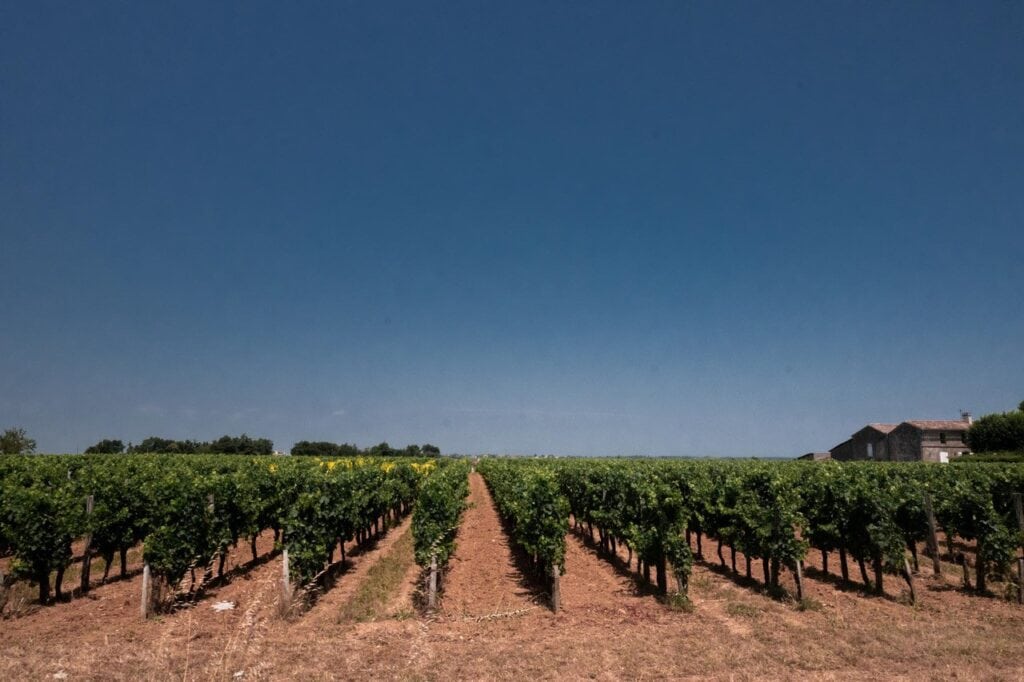
Wine has been planted in this area for close to 2,000 years and there are even relics of old Roman villas in the area. Contributed by Victoria of Guideyourtravel.com.
Verdon Gorge
The largest canyon in Europe, between the municipalities of Castellane and Moustiers-Sainte-Marie, the Verdon Gorge offers majestic landscapes and the truly stunning turquoise water of the Verdon River. The bright blue colour comes from glacial minerals. The Cliff heights vary from 250 metres to 700 metres and for birdwatchers looking for griffon vultures and black vultures swooping down in the air currents is incredible.

The road that goes around the Gorge crosses between the Alpes de Haute-Provence and the Var. There are several stops along the way, the Point Sublime, the Belvedere of L’Escalés, the Belvedere of Mayreste, the sublime corniche, the Cavaliers cliff, the Artuby bridge, the balconies of the Mescla.
Villa Ephrussi de Rothschild
The French Riviera is where I spent many childhood summers and therefore it’s a region I’m very familiar with. So much so that, as an adult, I felt the need to explore other – and further – horizons. But the travel restrictions during the pandemic brought me back to the South of France.
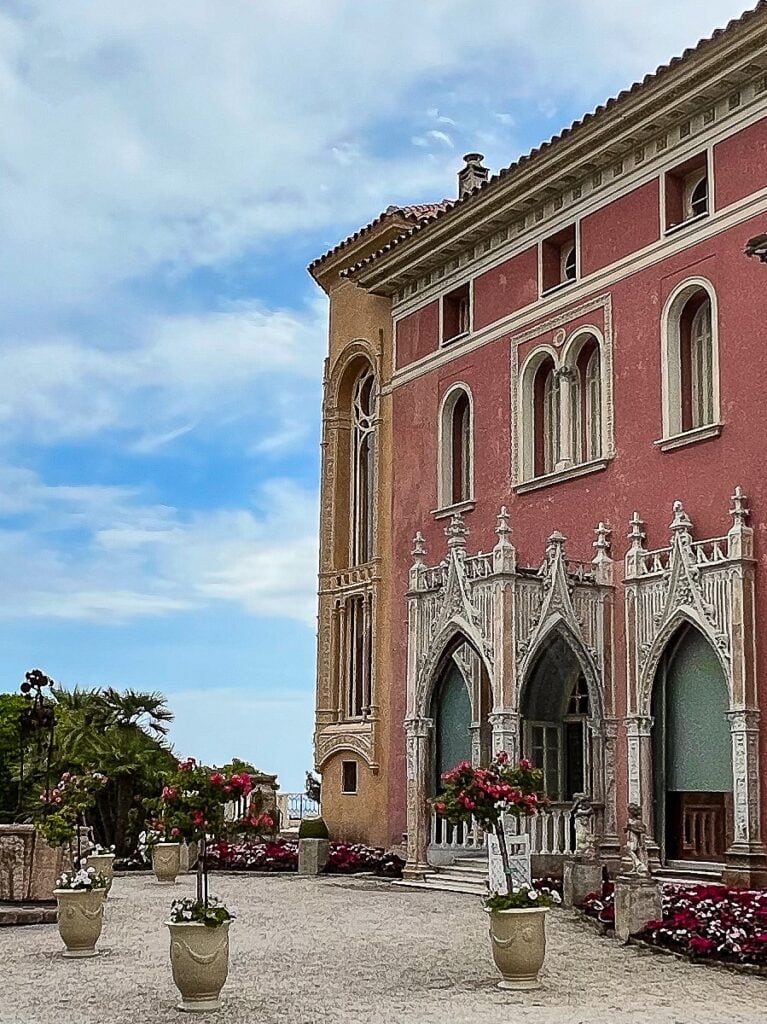
It was pure nostalgia to revisit some of the sites that I remembered from my childhood. But I had one blind spot, one that had always been on my radar but for some reason never made my travel itinerary. It was Saint-Jean-Cap-Ferrat, a chic peninsula located between the bays of Villefranche-sur-Mer and Beaulieu-sur-Mer. This former fishing village was put on the map in 1904 by Belgian King Leopold II who developed a large part of the promontory.
Soon, aristocrats and affluent families from all over Europe flocked to Saint-Jean-Cap-Ferrat where they stayed in the most monumental estates. One such descendant from a wealthy banking family was Baroness Béatrice Ephrussi de Rothschild.
This socialite and avid art collector commissioned the construction of her dream home on a vantage point with bay views on either side. Villa Ephrussi de Rothschild was built in Venetian and Florentine palazzo style and surrounded by nine gardens inspired by worldwide destinations. Shortly before her death, the Baroness bequeathed the estate, including its entire art collection, to the Académie des Beaux-Arts.

It’s open to the public every day of the year and a must-visit for everyone who loves to get a glimpse of the rich history of the French Riviera. Some of the items on display in Villa Ephrussi de Rothschild are paintings by the Great Masters, rare porcelain sets, and exclusive tapestries.
Every room overlooks one of the magnificent gardens and the Mediterranean Sea. The historic Villa et Jardins Ephrussi de Rothschild is the highlight of any Saint-Jean-Cap-Ferrat visit and makes for a great introduction to the rest of the peninsula. Contributed by Sarah of Cosmopoliclan.
The Calanques of Marseille
The cliffs of the Calanques are a natural wonder nestled between Marseille and Cassis. A Calanque is a unique kind of geological formation made of limestone. They are big rocky coves forming a steep and narrow valley inland and are mostly found around the Mediterranean Sea. Here, the Calanques National Park is a protected and highly regulated area, stretching over 20 km from Marseille to Cassis. With beautiful beaches, and miniature fjords with turquoise waters, this is a photographer’s dream.

Citadel Of Carcassonne, Carcassonne (Cité de Carcassonne)
Carcassonne, in the southern French province of Aude-Languedoc-Roussillon, is home to the ancient citadel known as La Cité. You may find Carcassonne Castle, Saint Nazaire Basilica, and other medieval architecture in this citadel. I think the Cité de Carcassonne is one of the most stunning French monuments outside of Paris. It is also one of the best historic places to visit in the South of France.
La Cité de Carcassonne is a must-see whether you have any interest in history, French châteaux, or just wish to spend a relaxing weekend in the south of France. Carcassonne is also an east weekend trip from Paris or any other major French city.

The Cité de Carcassonne, situated on a rocky ledge above the Aude River, has exceptionally impressive ramparts. One of the best things to do at Cité de Carcassonne is to stroll along the city’s ancient walls. These magnificent walls have witnessed 1000 years of military design and 2600 years of history. Plus, the views from the ramparts are simply breathtaking.
I recommend taking a tour led by an expert guide. This way, you can have a deeper understanding of the role of the Cathars in the city of Carcassonne’s turbulent past. Contributed by Imee of Journey to France.
Menton
Magnetic Menton is a gem of Southern France and a must on any French Riviera itinerary. One of the main highlights of this irresistibly charming French village is the Basilica of Saint Michael the Archangel, a monument as sunny as Menton’s inviting climate. The basilica was initially commissioned by Monaco’s Prince Honoré with the intention of honouring the cheerful town of Menton with a church.

Built in the 17th century by architect Laurent Lavagna and opened for public worship in 1653, the Basilica of Saint Michael Archangel is a beautiful example of Baroque architecture. It features a 53-meter-high bell tower constructed in the 18th century as well as an impressive 17th-century organ on the interior.
This beloved basilica is easily recognized for its iconic yellow facade and coinciding zigzagging staircase, Les Rampes des Saint Michel. Unsurprisingly, the basilica and the eye-catching series of ramped stairs are the subjects of many Menton photos, with about 100,000 visitors flocking to it each year.
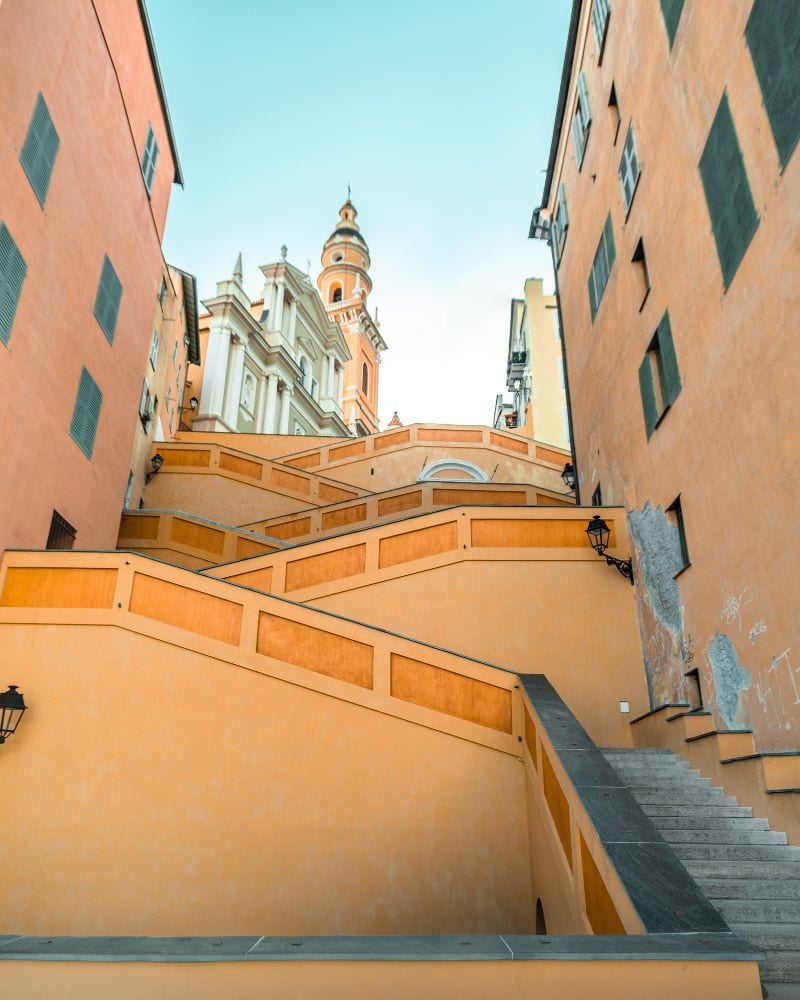
If you wish to visit the basilica and explore its interior, be sure to check the open hours in advance, as it is not open daily. In addition, for an exceptional view of the basilica and its trademark staircase, head to Quai Impératrice Eugénie along the port at sunset. From here, you will enjoy an incredible view of Menton’s skyline with the centrepiece of the Basilica of Saint Michael the Archangel. Make sure to bring a camera so that you can capture this Menton icon in all of its glory! Contributed by Elena of The Carry-On Chronicles.
Nice
When most people think of France, the very first thing that comes to mind is the City of Love, Paris. As such, people visit Paris and believe that they have fully experienced the French way of life. Unfortunately, this couldn’t be further from the truth. The reality is that France is filled with so many wonderful smaller cities that give you a much more authentic glimpse into French culture. This is something I discovered when I took my first French class at university, and what ultimately inspired me to visit some of the smaller cities in France.
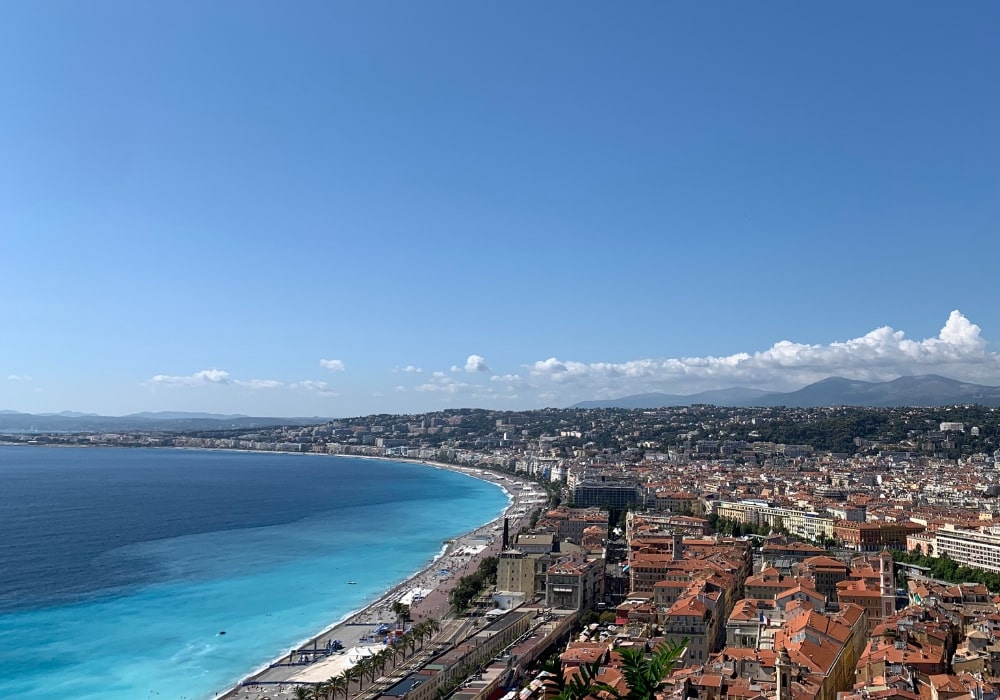
One such place is Nice, a coastal city in the South of France. And while people normally flock to Nice to relax on the beach or promenade down the walkways, the city also has several places that offer a peek into the city’s past. For example, if you’re in Nice and looking for more historic areas to visit, you will definitely want to stop by Old Town. Here, you’ll find lots of old buildings and fortifications dating back to the 11th century.
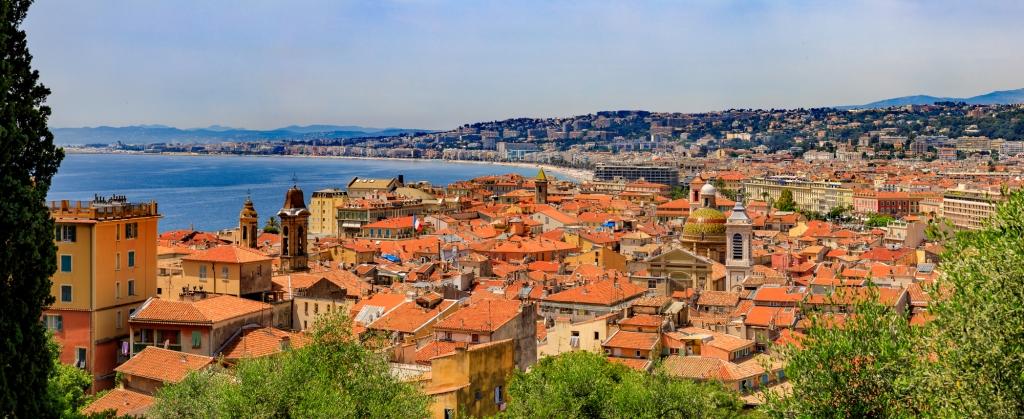
The most notable and popular one is the Castle of Nice, which is located on top of Castle Hill. It overlooks the Bay of the Angles and originally served as a military citadel. Today, it serves mostly as a park for the public and offers sweeping panoramic views of the city. From the unbelievably blue waters to the many red roofs, you won’t want to miss hiking to the top of Castle hill and exploring the grounds. Contributed by Kristin Lee of Global Travel Escapades.
Gordes
Gordes is a picturesque historic village in the Luberon region of Provence. Perched on the rocky foothills of the Vaucluse mountains, it is considered one of the most beautiful villages in France. Not only is Gordes famous for its beauty, but it is also known for its long and rich history dating all the way back to Gallo-Roman times.
I had the chance to visit Gordes during my South of France road trip and thoroughly enjoyed exploring this little gem. The village is characterized by a labyrinth of steep cobblestone alleyways and charming old stone houses with colourful window shutters. Walking around these winding streets and seeing the crumbling facades felt like stepping into another era.

The centre of the village is dominated by the Chateau de Gordes, an 11th-century fortified castle that combines architectural elements from both the Middle Ages and the Renaissance times. Nowadays it serves as the town hall and an art museum that you can visit. Another historically significant attraction in Gordes is the Village of the Bories. Here you’ll find an open-air museum exhibiting a mysterious ancient settlement of dry stone huts.
I also loved how many small cafes, ice-cream parlours and nice boutiques there were in Gordes. If you’re looking to shop for some souvenirs, Gordes is an excellent place for doing that. There are many small shops selling beautiful local handicrafts such as pottery, lavender products, paintings and jewellery.
My favourite place in Gordes though is the viewing platform just outside the village. From here, you can enjoy a wonderful panoramic view of the entire village and the valley below. Contributed by Marjut of The Smooth Escape.
Pont du Gard Aqueduct
The Pont du Gard Aqueduct outside of the city of Nimes looks like something that I would expect to see closer to Rome and not in the picture-perfect hill country of the south of France. During our visit to this region, I learned that the South of France is actually filled with the remnants of the Roman conquest of the area.
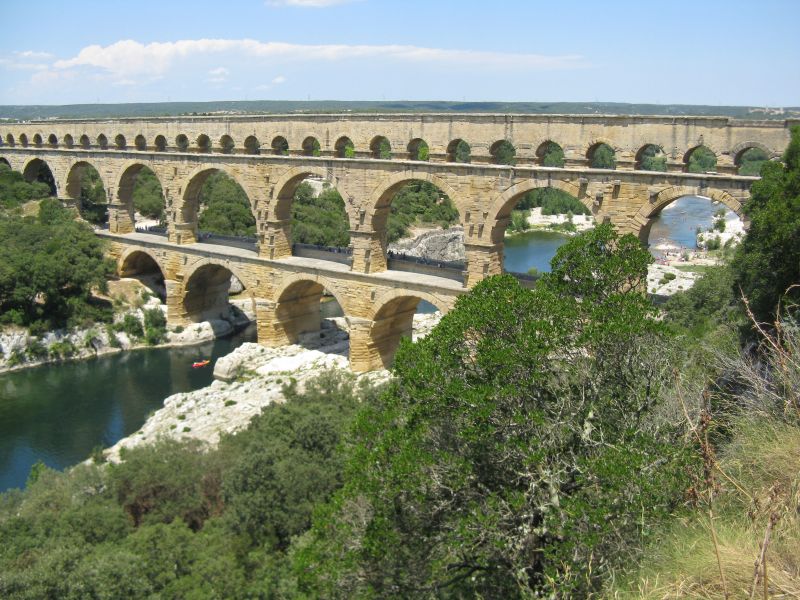
The Pont Du Gard Aqueduct is a Unesco World Heritage Site that was built in the middle of the 1st Century to carry water to the city of Nimes, which was a growing Roman colony. Visiting this remarkably well-preserved structure provides a window into Roman history and the incredible engineering skills that the Romans had perfected. Pont du Gard is the most spectacular piece of an entire aqueduct system that spans many miles and includes many bridges.
Entry into Pont du Gard gives you access to an informative museum, as well as the site itself which includes many hiking trails around the area. You can access a self-guided tour of the area via your phone, which will give you information at 30 different points along the tour route about the aqueduct and its history.
The river below the Pont du Gard is a popular place for families to swim and picnic in the summertime. This would be a great way to spend an afternoon if you are planning to visit during the summer!
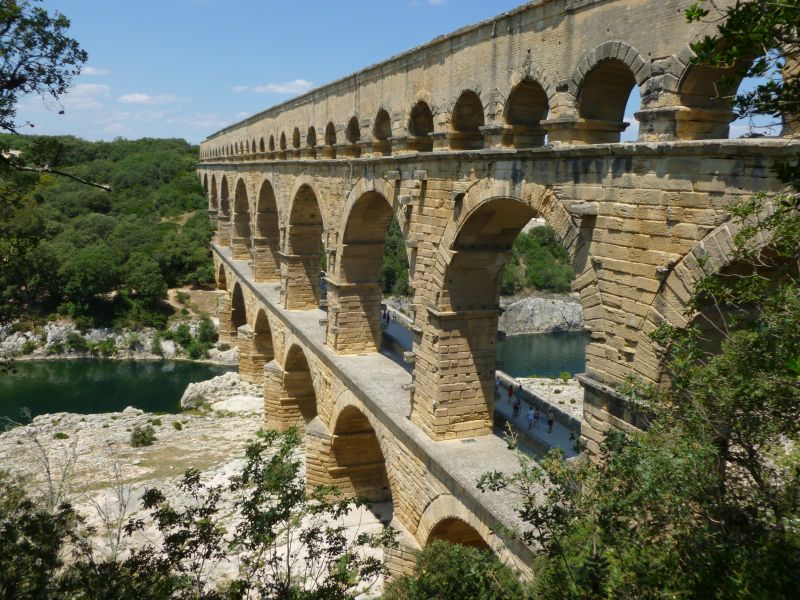
We enjoyed our visit. It was one of the highlights of our tour of the South of France. Walking around the bridge and seeing the sheer scale of it was a truly unique experience. As we explored the bridge and the surrounding trails, I tried to imagine the technical skill needed to build a bridge of this complexity with the simple tools and the knowledge available at the time. My mind was struck by the incredible achievement that the Pont du Gard aqueduct represented. It clearly illustrated the power of the Roman Empire at the time in a way that I had not previously been able to grasp.
If you have an interest in Roman history, a visit to the nearby Arena of Nimes is also a must! It was built around the same time as the Colosseum in Rome, and it is one of the most well-preserved Roman Amphitheaters in the world (it is so well preserved that they still use it for concerts and shows today!). Contributed by Shanna of Travel with Shanna.
Arenes de Nimes
Built in 70 CE, Arenes de Nimes is one of the main attractions of Nimes and one of the best historic places in the south of France. Here, people come to see this monument’s architecture. It was used as a ceremonial place, but nowadays, it is used for bullfighting, the Great Roman Games, and culture.
One hundred and thirty-three meters long, Arenes de Nimes is the 20th amphitheatre among the 400. In ancient times this arena could hold up to 24000 audiences at a time. This Roman architecture was built to conduct fights between gladiators and animals, but now this only hosts two bullfights.

After visiting this historical monument, you can head to some of the best places in this area, where you will feel the culture and historic ambience of this city.
Musée de la Romanité: If you love archaeological things, you must visit this museum nearby Arenes de Nimes. Here you will get to see archaeological stuff such as old coins, stones from the medieval age, and many other things.
Cinema Le Semaphore: After hopping around the entire city of Nimes you want some refreshment, then you can head up to Cinema Le Semaphore. Here you can watch a cinema that will introduce you to the local community and interests.
Petit Train de Nimes: As a traveller, if you want to know the original essence of a particular place, then you have to take a tour throughout the city by local transport. This way you will meet local people and learn about the city. Likewise, if you want to know about the history of Arenes de Nimes or the history of Nimes city, then we suggest you take a train ride. You can get a train in front of Arenes de Nimes. Local authorities organize the tour. On this tour, you will have a tour guide who will help you to understand the cultural beauty of Nimes city. Recommended by:Trijit Mallick from Dog Travel Buff
Antibes
Maybe it happens in whatever small village you visit on the French Riviera, but in Antibes, for sure you will fall in love with the south of France and start to investigate how to move or retire there! Even if you travel with twins, tantrums and silly requests will not spoil your mood!
To be fair to Antibes, it is actually a small city by the sea, that, from the moment you step off the train or climb out of your car, will capture you with its charm and relaxed vibe.
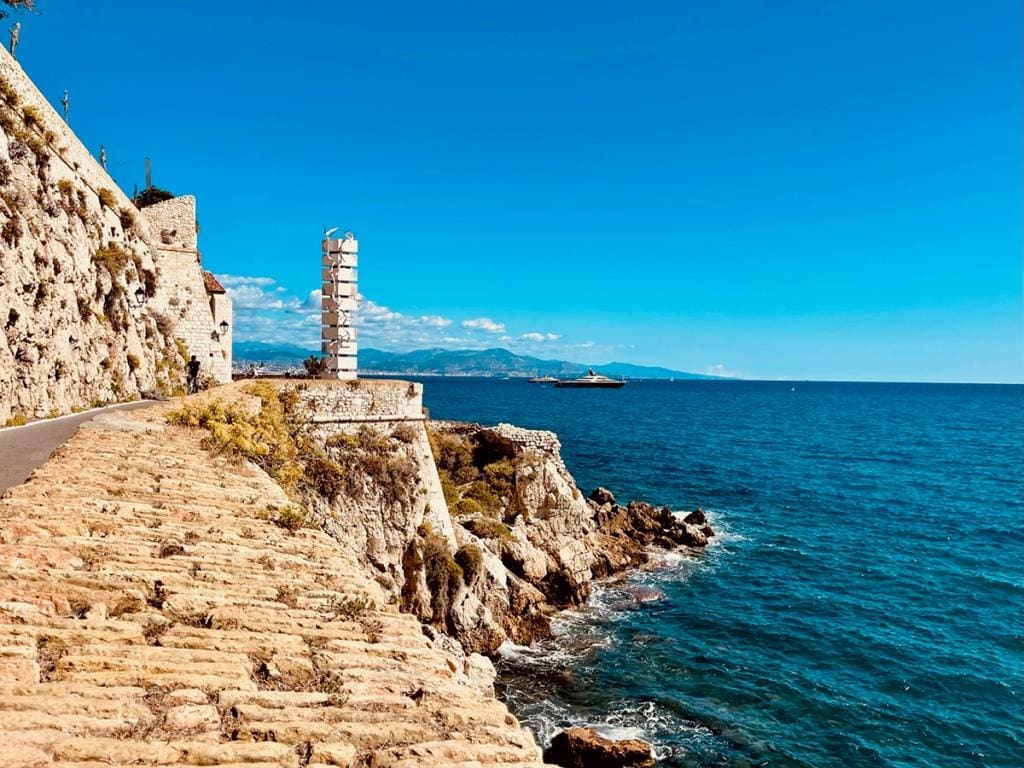
There are a few things to do in Antibes and of course, it is really close to other beautiful places like Nice, Cannes, and more, but if you are using it as a base the risk is that you may never leave it to go and explore elsewhere.
The historical centre itself will keep you busy for at least a day. You will probably eat your way through the town, stopping for a coffee while trying one of the delicious pastries, then you will not be able to stop yourself from exploring the many boulangeries to taste the different breads and focaccia. You will get easily distracted while shopping in the central market overwhelmed by the decision to buy all those cheeses, cold meats and more to go for an impromptu picnic, or stop there in one of the many eateries beside the market sipping a glass of wine while eating the local specialities!
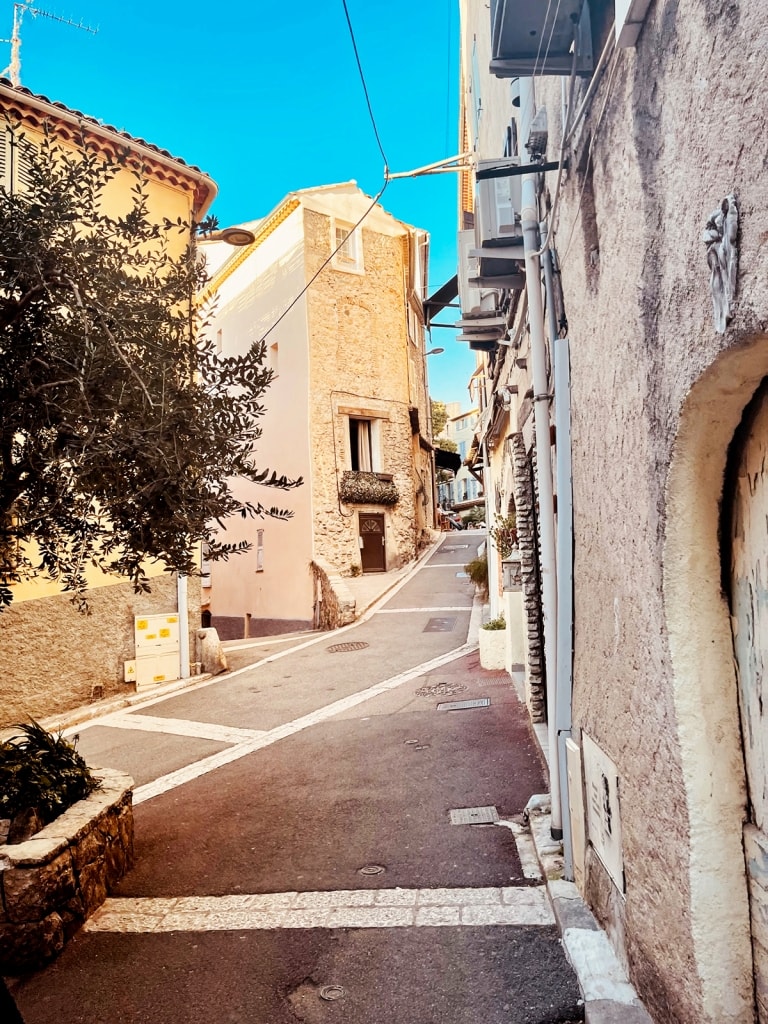
If you manage to have some time left you can still visit the Picasso museum or go and relax on the small city beach. It may be small but it is just around the corner from the city centre.
If you feel more active you can go to one of the beaches a little further along the cost toward Cap d’Antibes
The first walk is incredibly lovely, especially the first part and the walk after Garoupe beach, but if walking is not your thing then no worries because there is even a little hop on/off tourist train! Contributed by Clotilde from A princess travelling with twins.
Villefranche-de-Conflent
Located in the steep valley of the River Têt, Villefranche-de-Conflent is a pretty and historic walled town, located in the Conflent region of Catalonia, a commune of the Pyrénées-Orientales region. It can be reached by taking a short drive along the road from Perpignan heading towards the mountains and Andorra.
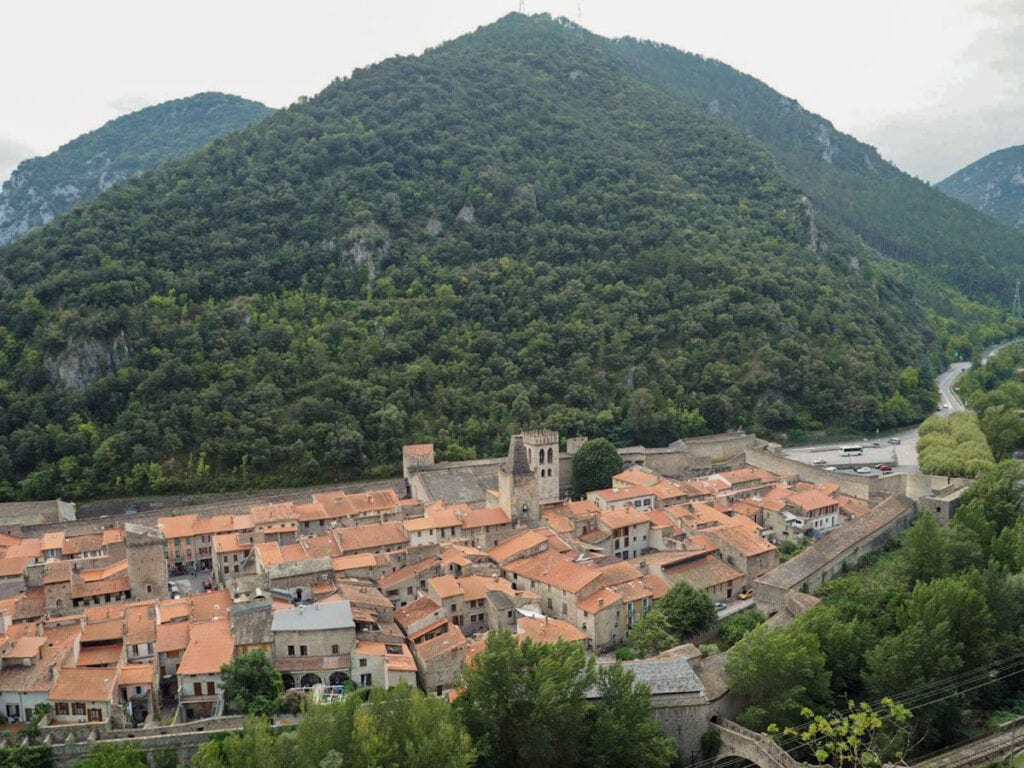
The town first dates back to 1098, but really came to prominence as a fortified settlement in the 1700s, with its design earning it modern recognition as a UNESCO World Heritage site. The town itself, though not too big, has a nice selection of gift shops and cute little restaurants. On the hillside above the town sits the imposing Fort Liberia, an extension of the fortified defences.
Having visited the town several times over the years, we have always enjoyed the atmosphere of the place, as well as the spectacular surrounding mountain scenery. We keep finding more things to do in Villefranche-de-Conflent. Some of the hill walks around the town are particularly impressive, with beautiful views to be enjoyed. Fort Liberia can be reached by either walking up, or taking a ride in a 4×4 if you don’t fancy the steep climb. There is also the fun option of descending all the way back down through a hidden subterranean staircase, something that our kids thought was a great adventure.

Other attractions to visit in and around Villefranche-de-Conflent include an accessible cave complex just outside of the town, and the ‘Yellow Train’, a railway that offers a scenic return journey further up into the Pyrénées mountains and back.
It all makes for a fun day out that suits people of all ages and interests. Contributed by Rachel of Children of Wanderlust.
Arles
I visited Arles for the first time decades ago, for an event which has become iconic: the Rencontres Internationales d’Arles, possibly the world’s best-known international photographic festival. Arles is where Van Gogh lived and worked for many years, creating more than 300 paintings and drawings. There is a Van Gogh walking trail, from which you can see the sites that inspired many of his masterpieces.
The Monastery Saint-Paul de Mausole, where Vincent Van Gogh was committed and spent his last years remains today a psychiatric hospital and you can tour parts of it.
In Arles, I witnessed a light show like no other: contemporary shots dancing on the walls of a most unlikely venue – the Arles Amphitheater, part of the city’s extraordinary Gallo-Roman legacy and one of its several Unesco World Heritage sites. From the moment I witnessed that juxtaposition of old and new, I vowed to return.
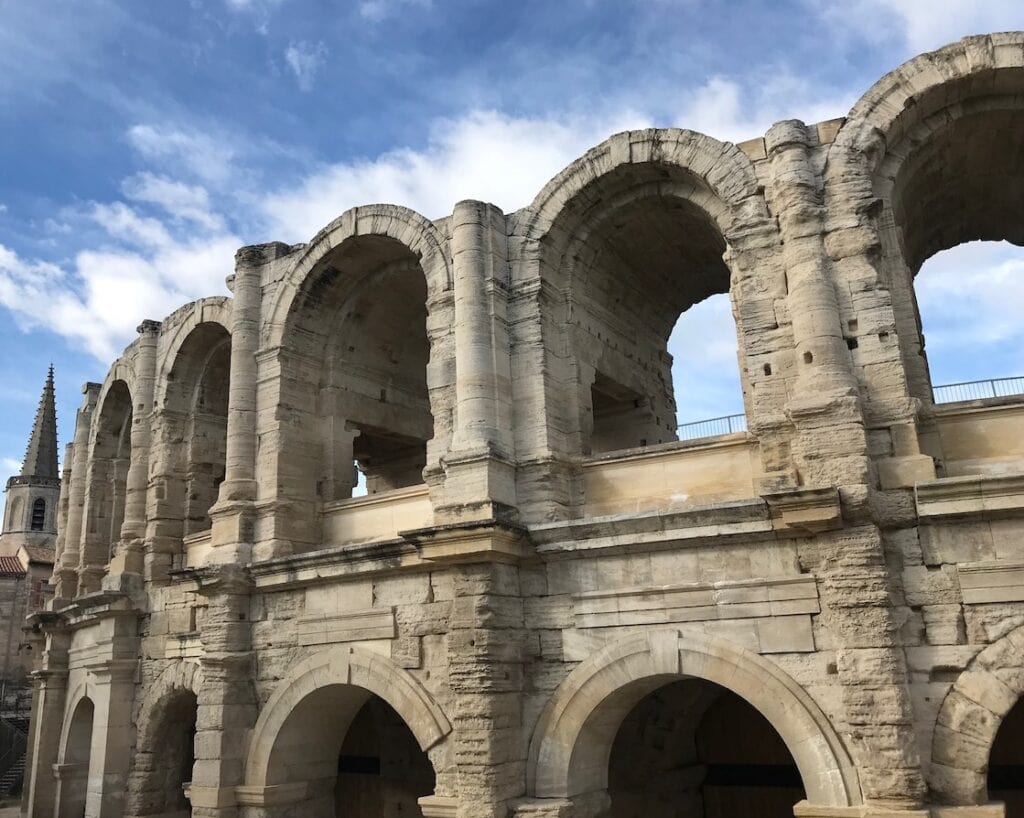
Fast forward and here I am, again, in the heart of the Arles Amphitheater but this time, it is serene, empty, with nothing that reminds me either of modern light shows or of the ancient blood sports some 20,000 people would gather to watch. This building was, after all, the city’s principal arena.
The Forum is the heart of any Roman city but the one in Arles is sadly gone, leaving behind only the foundations, or Cryptoporticoes, with their subterranean archways and ventilation shafts.
The handsome Roman Theater is another remnant of Rome, where on summer nights, 10,000 or so spectators would gather to watch plays that made them laugh or cry. Sadly, time has ravaged it and what with people “borrowing” stones for building and the impact of erosion, only a few columns remain, along with the graceful semi-circle of seats in front of the state.
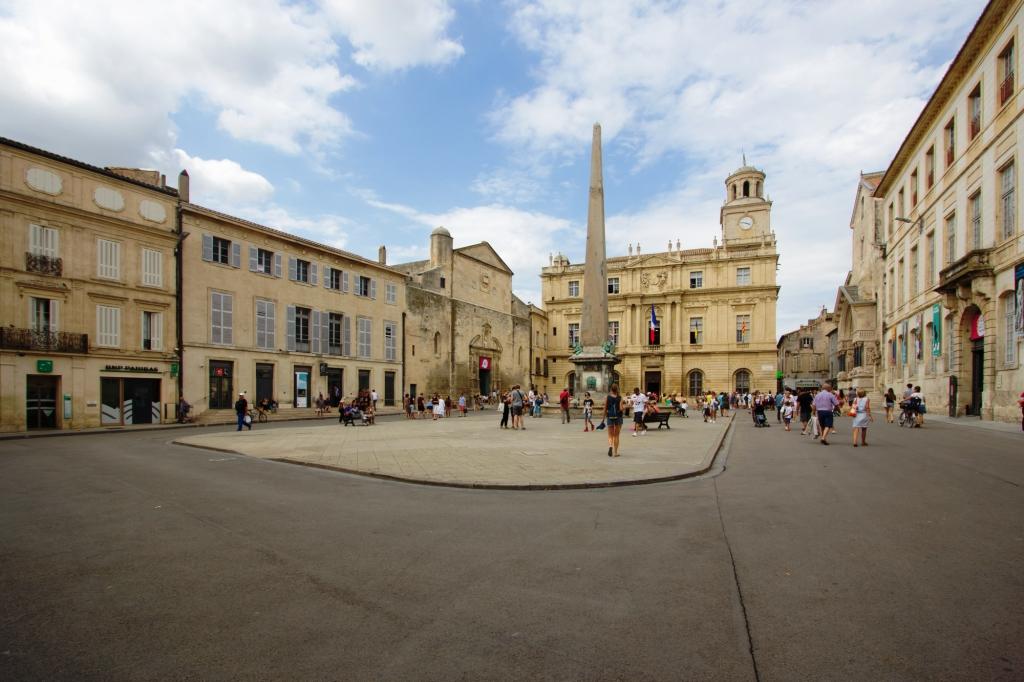
In the heart of Arles, a Roman obelisk stands tall in the main square. Elderly gentlemen sit on benches around the base, taking in the sunlight, much as they might have done those many centuries ago. It is not the most imposing structure of Arles’ Roman heritage, but it is the one you will probably come upon most often as you wander through the streets of the old town.
No visit to Ancient Arles would be complete without a stop at the Baths of Constantine, the best example of their kind in southern France, even though only a small portion has been cleared.
For an overview of the Roman city and a glimpse of many unique works of Ancient art – the only sculpted bust of Caesar is said to be the one on display here – visit the Museum of Antiquities and the few ruins that remain around it. Contributed by Leyla of Offbeat France.
St.Jean-Pied-de-Port
St.Jean-Pied-de-Port is a small town in a picturesque valley in the southwest of France, 10 km from the border with Spain. The name of the town in French means “St.John at the foot of the path” and refers to the location of St.Jean at the mountain pass over the Pyrenees. The history of St.Jean dates back to the 12th century when the original town was destroyed by the troops of Richard the Lionheart and a new town was rebuilt in a slightly different location.
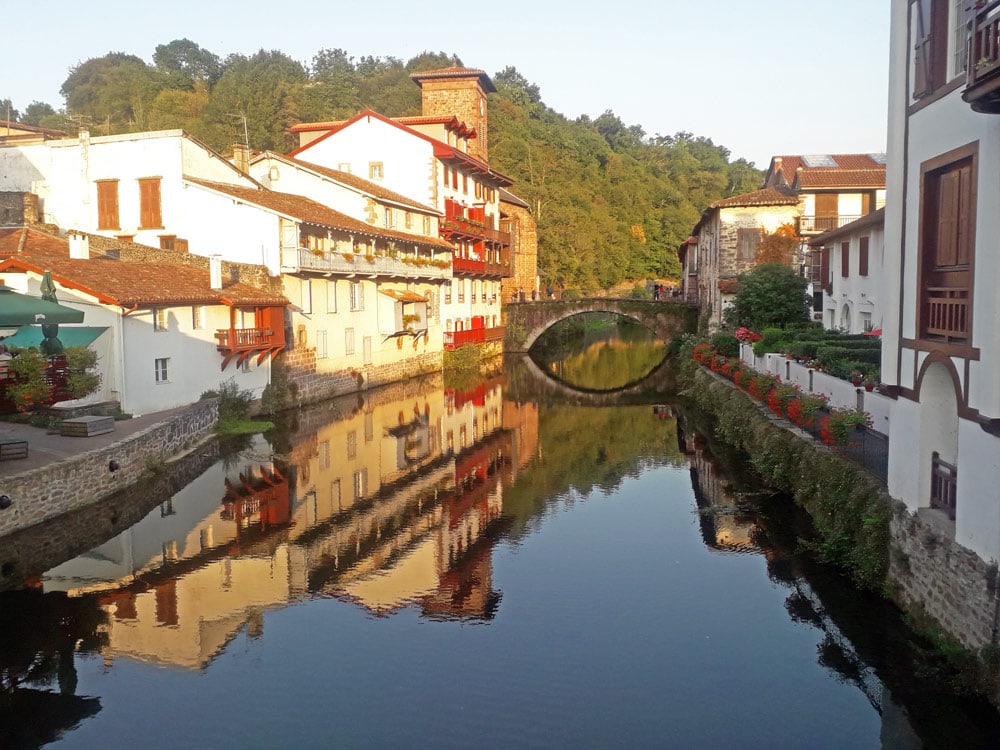
Since its foundation till nowadays, the town’s been playing an important role in the history of the Christian pilgrimage in Europe. It’s considered the starting point of one of the most important pilgrimage routes in the world, the Camino de Santiago or the Way of St.James. Pilgrims from all over Europe come to St.Jean to start their 800-kilometre journey across Spain to Santiago de Compostela.
St.Jean-Pied-de-Port was on my bucket list for a long time. After watching The Way, a movie with Martin Sheen I decided to visit the town and walk the Camino Frances. Being in St.Jean was like travelling back in time. The narrow cobbled streets of St.Jean are perfect to explore on foot. I spent days walking around the town, exploring the city walls, and visiting historical monuments such as the Gothic church of Notre-Dame-du-Bout-du-Pont, the citadel, and the old city gates. Every morning I started with a coffee and a freshly baked croissant at one of the small local cafes watching people passing by. Contributed by Alya from Stingy Nomads.
St. Paul de Vence
If you are looking to find a cool place on the French Riviera with an artist-inspired region then consider visiting St. Paul de Vence located in the hills above the city of Nice. St. Paul de Vence literally translates as Saint Paul of Vence and is one of the oldest medieval towns in France. It is an artist haven and tourist spot away from the busy French Riviera and definitely worth the short drive by bus about forty-five minutes away from Nice.
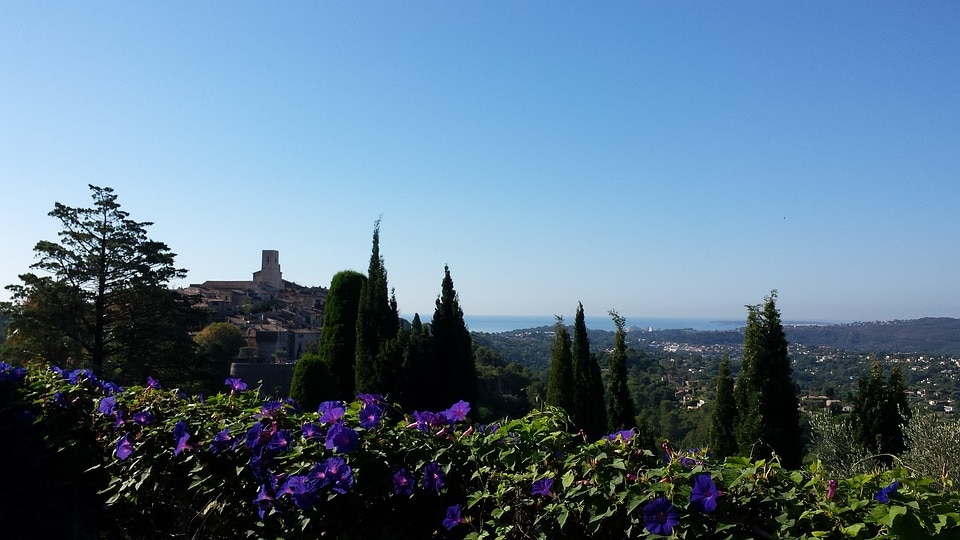
What you’ll find in this artist commune is a sophisticated village with chic shops, galleries and art studios along with amazing restaurants and gorgeous views below of the French Riviera region. A fun and easy tour by bus, you get off at the main town entrance and you can easily walk around this small and beautiful village as a day trip. Lots of delicious restaurants and attractions to do this as an easy day trip from Nice which is just a short drive away.
I would definitely visit for a different perspective on the Alpes Maritime region of France. Contributed by Noel of This Hawaii Life.
Touring the South of France is an unforgettable experience that offers something for everyone. From stunning coastal views to charming medieval towns and delicious cuisine, this region has it all. Whether you’re travelling with friends or family, or simply seeking a solo adventure, the South of France promises to leave lasting memories. So pack your bags, hit the road, and get ready to discover all the beauty and charm this region has to offer.
I hope this truly fascinating list of places to visit in southern France has piqued your interest and that you discover that very special place here that holds your heart.
You may also like to read
Normandy Villages 22 of the most beautiful
Food in Brittany: Fall in love with the food of Bretagne
Château de Josselin – A 1000 years of history in the heart of Brittany
Dinan France – medieval France at its finest
14 Fabulous French Castles to visit
Amboise France exploring the Loire Valley
Chinon – Fortress of the Plantagenets
Fontevraud Abbey – led by powerful women
Pin it to save it

